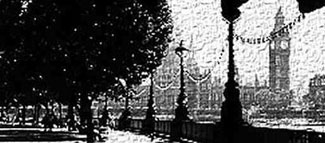|

|
||||
Rachel Lichtenstein, On Brick Lane, (London: Penguin, 2008), pbk, 368 pp., ISBN: 9780141018515, £8.99
Suneel Mehmi
<1> On Brick Lane is Lichtenstein’s archaeological -- or, as she says, somewhat schizophrenic -- attempt to archive Brick Lane’s past and present communities. A chronicle of cyclical changes, the book can be seen as a heteroglossia or a collage of oral histories and artefacts. We read not only voices, but also photographs, quotations, short anecdotes, even emails, on almost every other page. These diverse elements disrupt a purely linear, monolithic progression of text or history. In a further self-reflexive, postmodernist twist, Lichtenstein recounts how her excavation of community builds momentum by creating a contingent community of its own: a web of researchers, ‘do-gooders’, intellectuals, artists and community leaders united through chance, friendship, family and commitment. The end product seems a work written for the community by the community itself.
<2> An urgent need to retrieve the past before it slips away underpins the book. This is perhaps a defensive response to recent developments and conflicts in urbanisation which have re-emphasised the difficulties of community living. Lichtenstein conceives of her book in the context of a Romantic identification with the recreated Polish world of her Jewish grandparents, who set up a clock-and-watch shop on Brick Lane in the early 1930s, and of the contemporary realities of her marriage with a second-generation British Muslim. The stories Lichtenstein presents mainly address the questions of multiculturalism, capitalism and their shifting effects in the capital after the knee-jerk reassessments of 9/11 and the 7th July bombings in London. We read of how hard-working Jews, Bangladeshis and Somalians (to name but a few) escape poverty, holocausts, floods and persecution to build a truly international community in an abandoned place of great hardship and ill repute and thus add something unique to the economy and to British and London identity, only to be destabilized periodically by greedy drug-dealers, cultural tourists, property developers and generally apathetic City-types. We also read of their struggles against cowardly and hate-filled fascists such as Mosley, disrespectful drunkards, and members of the current, miserable right-wing, who proudly -- but anonymously -- remember supplying the first Doc Martens to skinheads and racist thugs. But On Brick Lane is wary in its construction of resistance and the immigrant. It is not pedantic or nationalistic in its definitions. It also carries the stories of another type of immigrant unsettled by recent developments in the urban landscape -- the intellectuals, artists and writers that came to London to escape the stifling conformity of the suburbs and to experience a stimulating cosmopolitanism and a sense of living history.
<3> It would, however, be an injustice to say that On Brick Lane is merely an apology, a lament for a vanishing present, or an idealisation. Indeed, Lichtenstein takes a cyclical view of history and revises the mythical landscape she experienced as a child. Lichtenstein’s aim is ultimately Proustian: to present a psychologically charged, fuller picture of her remembrance. Perhaps this grand objective finds its crystallisations in her presentations of Iain Sinclair or the Tereisian figure of Svar. Rather than accommodating the simplifying, patronising desire for the authentic and the noble, Lichtenstein’s palimpsest of histories always suggests the mentalities, expediencies and miseries behind the repackaging of a place nowadays referred to, politically incorrectly, as ‘Banglatown’. Lichtenstein is honest in exposing the shortcomings, grime and crime of the community. The deprivations and prejudices of the ghetto are given form: the very serious financial difficulties which carry tender, the impossible dreams, the inability of new arrivals to speak English, the wasted opportunities and the education of women who are married off as soon as they leave college, the tantalising prospect of an identity that is there for the taking, but which always has to fight off the holds of alienation. There are particularly shocking reports in the book about violence, especially the instances of brutality perpetrated against prostitutes by various groups, which points more generally to the exploitation of Others by a wider range of people.
<4>
On Brick Lane gives form, lucidity and passion to the Babel of tongues in London and locates the personal histories of many in more universal terms. Lichtenstein herself is a compassionate and committed chronicler but never mawkish and she has a certain terseness of style. Written against the machine of a tourist industry which reduces the scope and value of Brick Lane to the stalking grounds of Jack the Ripper and which gapes at its residents as though they were savages, Lichtenstein’s history certainly has a unique claim for attention against such pathological representations. ‘Schizophrenia’ is preferable to these other types of madness. Lichtenstein’s absorbing anecdotal material and refreshing volatility celebrates the diversity of tongues and the panoply of life. On Brick Lane invites and encourages the reader to explore the territory.
To Cite This Article:
Suneel Mehmi, ‘Review of Rachel Lichtenstein, On Brick Lane, (London: Penguin, 2008) Literary London: Interdisciplinary Studies in the Representation of London, Volume 7 Number 1 (March 2009). Online at http://www.literarylondon.org/london-journal/march2009/mehmi.html.
All material published in The Literary London Journal (material within the directory www.literarylondon.org/london-journal/) is copyright © the identified author. If no author is identified in relation to content, that content is copyright © The Literary London Society, 2003-2014.